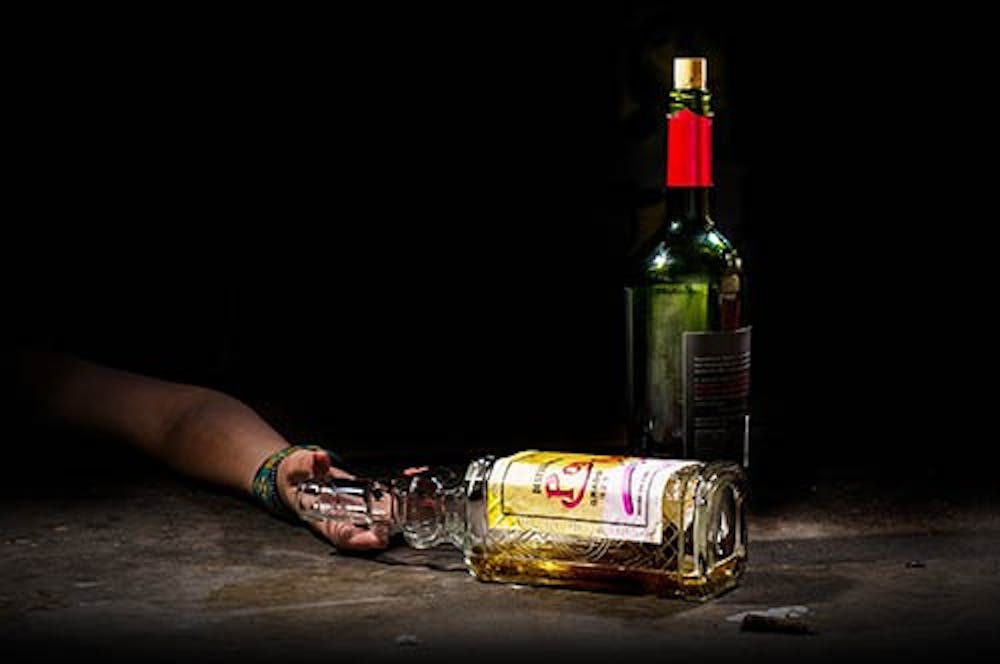Editor’s Note: The names Brigette Holson and Kendra McNeal are pseudonyms. The students’ names were changed to protect their identities.
Ball State student Brigette Holson was rushed to the hospital in an ambulance after a University Police Department officer found her vomiting in a bathroom at an early morning campus event. Holson blew a .24 blood alcohol content, but her BAC was still rising.
At the hospital, her blood tested a .32 BAC.
“I woke up at 7 p.m. and asked for a blanket,” she said. “I blacked out. I didn’t remember anything.”
Her friend Kendra McNeal, who attended the event with Holson, knew the situation was serious when she became incoherent and could not stop vomiting.
“That’s when I sent someone to get help,” McNeal said.
She had seen alcohol poisoning firsthand on a previous Spring Break trip, so she said she understood the severity of the situation.
Alcohol poisoning’s symptoms are vague and wavering, even though it is a life-threatening condition. Students often do not recognize the warning signs because vomiting and passing out have become common behaviors for binge drinkers.
In a study done by Amie Haas and Sergio Flores at Palo Alto University in 2010, only 36.6 percent of students could correctly identify the six signs of alcohol poisoning.
Julie Sturek, a Ball State health educator, is responsible for educating students about the risks of drinking.
“[Students] don’t know their tolerance and limits,” she said. “Especially freshmen.”
Ball State Chief of Police Gene Burton has noticed higher blood alcohol levels on a more regular basis over the past few years, as well as the increase of alcohol-related activity, such as noise complaints at house parties.
“Students only see the humor in ‘party till you pass out,’” Burton said.
Burton and Sturek said everyone responds to alcohol differently. Size, weight, medical conditions, medications and gender all affect the level of intoxication, as well as the type of alcohol, amount consumed and time between drinks. The combination of these factors and many others affect a person’s BAC.
The combination of factors makes it challenging to know a person’s BAC simply based on the amount of drinks they have consumed compared to their height and weight, meaning someone could unknowingly drink a dangerous amount of alcohol because of something as accidental as skipping a meal.
Burton said there is almost no way of knowing how serious the danger is without professional help.
“Always monitor someone who seems overly intoxicated,” he said.
Once a person stops drinking, their BAC will still continue to rise until all the alcohol consumed gets into their system.
“You can stop drinking at 1 and at 2, your BAC is still going up,” Burton said. “It can creep up on you.”
There is no exact BAC that is associated with alcohol poisoning or even death. Again, it varies depending on the person. Sturek said she has seen people pass away with a .25 BAC and people live with a .5 BAC.
“Generally, a .25 [BAC] and above is dangerous.” Sturek said.
Despite nationwide efforts to educate students on the signs of alcohol overdose, the death toll is increasing. More than 1,800 students die each year of alcohol-related causes, according the study by Haas and Flores.
Alcohol is a central nervous system depressant, so an overwhelming amount shuts down the brain and spinal cord. The blood becomes toxic and vital bodily functions will start to cease, Sturek said.
She said the goal is to promote safe partying and alcohol awareness.
Jennifer Pierce, program coordinator of student life, said Greek Life shouldn’t take all the blame, even if popular culture can stereotype the community as heavy drinkers.
“It’s not a greek-only problem — as a campus, as a whole, we are working together to address it,” she said.
Each chapter has programming designed to educate new members about the risks of alcohol. Also, the community sponsors events to promote awareness such as Greek Academy, where new members are paired with a peer mentor to delve into any unanswered questions.
“It’s a conversation we have constantly,” Pierce said.
Starting Fall Semester 2014, all incoming freshmen will likely have to take a computer-based alcohol education program. Sturek said the program will be tailored to include the Lifeline Law and other important alcohol information pertaining to Indiana and Ball State.
“College students think they’re invincible,” Sturek said. “And there’s a lot that needs to be done to change that.”
Ball State officials talk drinking dangers, how to stay safe
The Daily News

DN PHOTO ILLUSTRATION JONATHAN MIKSANEK

